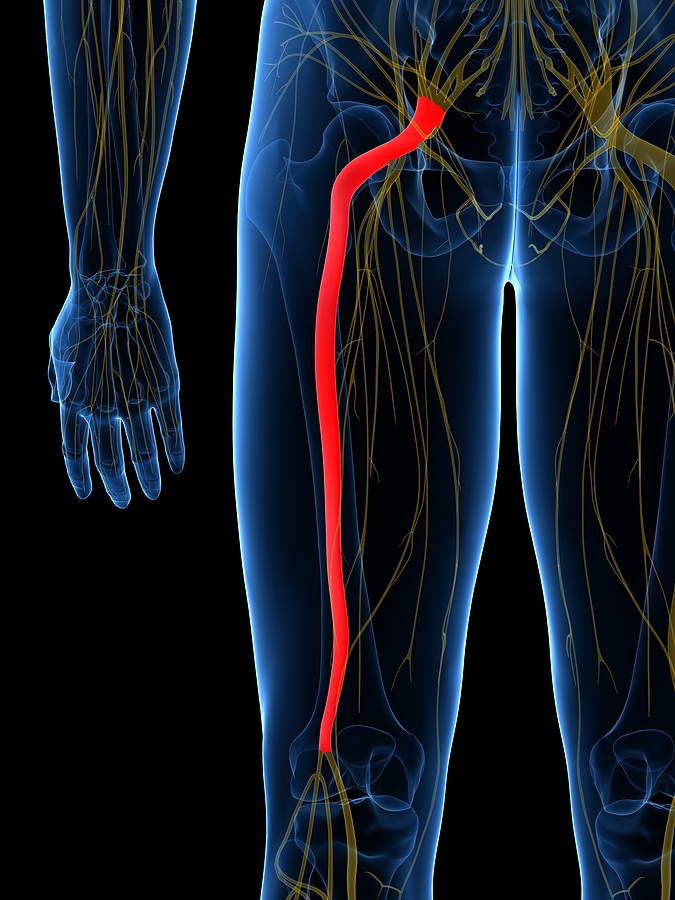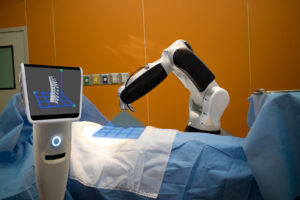Sciatic nerve pain, also known as sciatica, is a common condition that affects millions of people around the world. It occurs when the sciatic nerve, which is the largest nerve in the body, becomes irritated or inflamed. The pain can range from mild to severe and can be debilitating, making it difficult to perform everyday activities. In my practice, I strive to educate my patients about their conditions: what causes them, and the best options for treating them. Let’s take a look at the causes, symptoms, and treatment options for sciatic nerve pain.
Causes
Sciatic nerve pain is caused by irritation or compression of the sciatic nerve. The nerve originates in the lower back and runs down through the buttocks and legs. There are several factors that can cause this irritation or compression.
- Herniated Discs: A herniated disc occurs when the soft inner material of a spinal disc leaks out and irritates nearby nerves, including the sciatic nerve.
- Spinal Stenosis: Spinal stenosis is a condition in which the spinal canal narrows, putting pressure on the spinal cord and nerves.
- Piriformis Syndrome: The piriformis muscle is located in the buttocks and can compress the sciatic nerve if it becomes tight or inflamed.
- Degenerative Disc Disease: As we age, the spinal discs in our back can degenerate and become less flexible, leading to irritation of nearby nerves.
- Trauma: An injury to the lower back or buttocks can cause damage to the sciatic nerve.
Symptoms
The most common symptom of sciatic nerve pain is a sharp, shooting pain that radiates down the back of the leg. This pain can be accompanied by numbness, tingling, or weakness in the affected leg. In some cases, the pain may also be present in the lower back, buttocks, or feet.
The severity of the pain can vary, from mild discomfort to excruciating pain that makes it difficult to walk or stand. The pain may also be worse when sitting, coughing, or sneezing.

Treatment Options
There are several treatment options for sciatic nerve pain, ranging from conservative measures to surgery. The treatment option that is best for you will depend on the underlying cause of your pain, as well as the severity of your symptoms.
- Physical Therapy: Physical therapy can help relieve sciatic nerve pain by strengthening the muscles in the lower back and legs. This can help improve posture, reduce pressure on the sciatic nerve, and increase mobility.
- Medications: Over-the-counter pain relievers such as acetaminophen and ibuprofen can help relieve mild to moderate sciatic nerve pain. In more severe cases, prescription medications such as muscle relaxants or opioids may be necessary.
- Injections: Steroid injections can help reduce inflammation and relieve pain. These injections are typically administered directly into the affected area.
- Surgery: In cases where conservative measures have failed, surgery may be necessary to relieve pressure on the sciatic nerve. Surgery may involve removing a herniated disc or widening the spinal canal to relieve pressure on the nerve.
Preventing Sciatic Nerve Pain
While it may not be possible to completely prevent sciatic nerve pain, there are several things you can do to reduce your risk.
- Maintain good posture: Poor posture can put added pressure on the lower back and lead to irritation of the sciatic nerve. Make sure to sit and stand up straight, with your shoulders back and your feet flat on the ground.
- Exercise regularly: Regular exercise can help strengthen the muscles in your lower back and legs, reducing your risk of developing sciatic nerve pain.
- Lift properly: When lifting heavy objects, make sure to use proper lifting techniques. Bend at the knees, keep your back straight, and use your legs to lift the object.
- Maintain a healthy weight: Excess weight can put added pressure on the lower back, increasing your risk for sciatica.
- Stretch regularly: Regular stretching can help improve flexibility and reduce the risk of muscle imbalances that can contribute to sciatica.
- Practice good ergonomics: If you spend a lot of time sitting at a desk, make sure your workstation is set up to promote good posture. Use an ergonomic chair, adjust your computer monitor to eye level, and take frequent breaks to stand up and stretch.

Get Relief from Sciatica
Sciatic nerve pain can be a debilitating condition that can significantly impact your quality of life. If you are experiencing symptoms of sciatic nerve pain, it’s important to seek treatment to relieve your pain and prevent further complications.
At the Institute for Comprehensive Spine Care, we are dedicated to providing our patients with the highest quality care using the latest technology and surgical techniques. My team and I have extensive experience in treating sciatica nerve pain and are committed to providing our patients with the best possible outcomes. Don’t hesitate to seek treatment. With the right treatment plan, you can find relief from your pain and get back to your normal activities. I encourage you to contact us to schedule a consultation.








